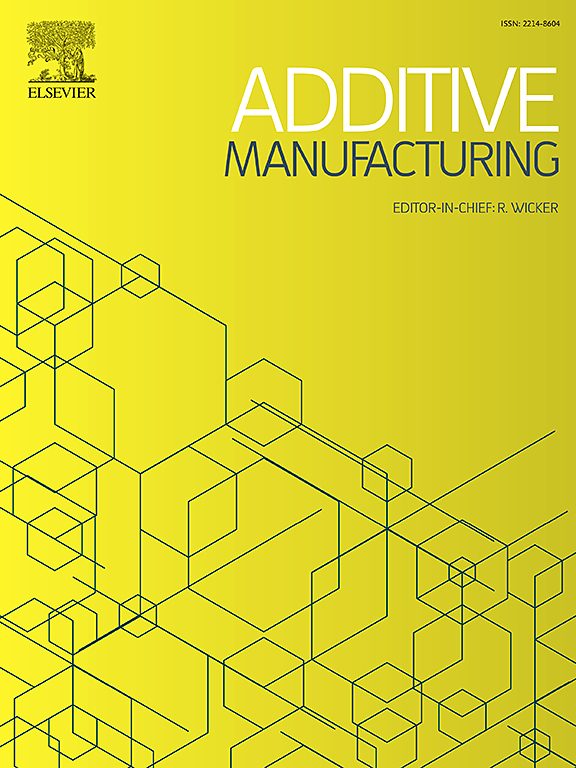Printing dense and low-resistance copper microstructures via highly directional laser-induced forward transfer
IF 10.3
1区 工程技术
Q1 ENGINEERING, MANUFACTURING
引用次数: 0
Abstract
Laser-induced forward transfer (LIFT) can be used to print micrometer-scale metallic three-dimensional (3D) structures. However, the structures produced by this method exhibit high porosity and poor electrical properties due to the non-vertical ejection and loose stacking of transfer particles. In this study, we replace the conventional copper (Cu) monolayer donor film with a chromium-copper (Cr-Cu) bilayer film. We demonstrate that this bilayer enhances laser absorption and improves glass-metal adhesion through the spontaneous formation of a CrOx interlayer. The improved laser absorption reduces the optimal pulse energy required for transfer, while the interlayer stabilizes the transfer process, promoting more vertical ejection of material. This enhanced directionality leads to denser structures, even when the donor and receiver are placed at a larger distance. The resulting structures exhibit a porosity of 4.8 % and a specific resistance 2.9 times that of bulk copper. Cross-sectional electron microscopy is employed to investigate the microstructure and elucidate the mechanisms behind the reduced resistance. Additionally, we demonstrate the application of this 3D printing method in creating high aspect ratio microstructures and repairing open defects on printed circuit boards (PCBs).
利用高定向激光诱导正向转移技术打印致密低阻铜微结构
激光诱导正向转移(LIFT)技术可用于打印微米级金属三维结构。然而,由于转移颗粒的非垂直喷射和松散堆积,这种方法产生的结构具有高孔隙率和差的电性能。在这项研究中,我们用铬-铜(Cr-Cu)双层膜取代了传统的铜(Cu)单层给体膜。我们证明了这种双分子层通过自发形成的CrOx中间层增强了激光吸收并改善了玻璃-金属的粘附性。改进的激光吸收降低了转移所需的最佳脉冲能量,而中间层稳定了转移过程,促进了材料更多的垂直喷射。这种增强的方向性导致更密集的结构,即使供体和受体相距更远。所得结构的孔隙率为4.8 %,比电阻为大块铜的2.9倍。采用横截面电子显微镜对其微观结构进行了研究,并阐明了电阻降低的机理。此外,我们展示了这种3D打印方法在创建高纵横比微结构和修复印刷电路板(pcb)上的开放缺陷方面的应用。
本文章由计算机程序翻译,如有差异,请以英文原文为准。
求助全文
约1分钟内获得全文
求助全文
来源期刊

Additive manufacturing
Materials Science-General Materials Science
CiteScore
19.80
自引率
12.70%
发文量
648
审稿时长
35 days
期刊介绍:
Additive Manufacturing stands as a peer-reviewed journal dedicated to delivering high-quality research papers and reviews in the field of additive manufacturing, serving both academia and industry leaders. The journal's objective is to recognize the innovative essence of additive manufacturing and its diverse applications, providing a comprehensive overview of current developments and future prospects.
The transformative potential of additive manufacturing technologies in product design and manufacturing is poised to disrupt traditional approaches. In response to this paradigm shift, a distinctive and comprehensive publication outlet was essential. Additive Manufacturing fulfills this need, offering a platform for engineers, materials scientists, and practitioners across academia and various industries to document and share innovations in these evolving technologies.
 求助内容:
求助内容: 应助结果提醒方式:
应助结果提醒方式:


